

Suunto Blog
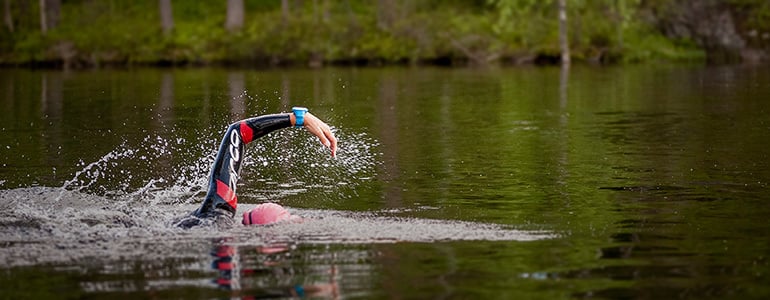
The road to Kona Ironman, Step two: rapid progress
Last week we kicked off the first instalment of our four-part series following Suunto athlete Åsa Lundström as she prepares for the coming Ironman World Championship in Kona, Hawaii. After looking at step one last week, planning, this week Åsa tells us what progress, step two, looks like as her training intensifies.
There’s one crucial sign Åsa looks for to know she’s making progress in her training for the Kona Ironman: feeling unbeatable.“They don’t come very often, but every now and then, you should get that moment, if only for a moment, that you are unbeatable,” she says. “If I don’t ever get those ‘I’m on fire today!’ moments in my training periods, then something needs changing.“I don’t do tests or anything like that to check I’m in good shape, I just look for signs, a feeling, during the quality sessions I do – it’s the feeling of being immortal, unbeatable, strong.”
Click here to read more about Åsa Lundström, the unlikely Swedish triathlete
© Orca/Gines Diaz
Having planned her training with her coach Cliff English, it’s then time to make rapid progress, to push herself towards her personal best while also ensuring she has enough recovery time.Åsa’s training progresses through three stages: the first is getting into the rhythm of hard training; the second stage involves blocks of quality and quantity sessions; and the last is a tapering period of two weeks before race day. As Åsa moves through the three stages, her coach Cliff English tracks her performance and makes adjustments to her training as required. Understanding and trust between athlete and coach is essential here.
The longer Cliff works with an athlete, the more data he accumulates, which better helps him track the athlete’s performance and recognize when changes must be made. This means both he and Åsa must be sensitive to signs they’re pushing too hard or not hard enough.
Click here to read Åsa’s 8 open water swimming tips!
“If I start having trouble sleeping, or lose my appetite that could be a sign to back off a bit,” Åsa says. “On the other hand, if I never feel exhausted after a quality session, but have an unsatisfying feeling, that could be a sign of not pushing hard enough. “I am supposed to feel tired between the sessions more or less all the time.”As her training intensifies, Åsa also works on the mental side of her training by spending time visualizing the race, the potential scenarios that could happen and how she would respond to them. “As race day gets closer, I also stop meeting people who might be sick, or even just have a minor cold,” she says. “I skip junk food and unnecessary treats and I make sure I get enough sleep every night.”
Stay tuned for third installment of our four part series about Åsa as she makes progress on the road to the Ironman World Championship in Kona.
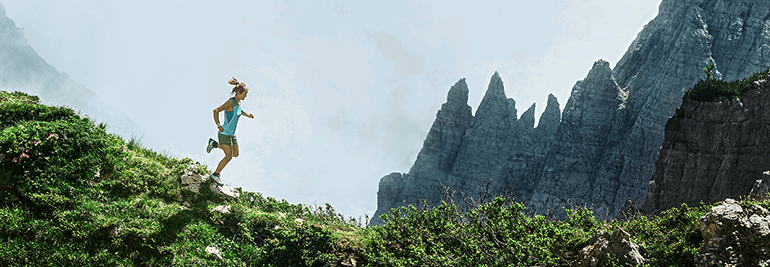
Emelie Forsberg's 6 favorite running routes
Think you can keep up with skyrunning champion Emelie Forsberg? Or maybe – and more realistically – you just want to explore her favorite mountain landscapes? Look no further – here are Emelie’s 6 best-loved trail running routes!
All trail runners have their go-to training routes – places that feel like home every time they run them.Skyrunning champion and devoted mountain lover Emelie Forsberg has her's and three of them are in Sweden, her beautiful homeland.
Check out the six trails below for a super dose of running motivation.
Watch Emelie talk about her love of running in the mountains in the video below
Kebnekaise, Sweden
Distance: 16.09 kmTime: 04h57mAscent: 2288 mDecent: 2291 mHighest point: 2116 mWhy: I ran this trail in northern Sweden, where I used to work, with two friends. This is a tour over Touplagorni, a spectacular summit, and also Kebnekaise – Sweden’s highest mountain. It includes scrambling and some easy climbing. I love doing this kind of thing with friends!
Aiguilles des Posettes, Chamonix, France
Distance: 9.17 kmTime: 01h26mAscent: 979 mDecent: 986 mHighest point: 1998 mWhy: I really like to train on this mountain, either for a faster run in the morning or a recovery run in the afternoon. It has such a beautiful view with all the Mont Blanc massif and the Aiguilles Rouge in the front.
Click here to read more about Emelie Forsberg
High Coast, Sweden
Distance: 27.76 kmTime: 04h01mAscent: 850 mDecent: 937 mHighest point: 285 mWhy: This is where I grew up and played around. The High Coast has small hills, wild forest and beautiful nature. This is a section of the High Coast Trail.
Dent Blanche, Pennine Alps, Switzerland
Distance: 4.42 kmTime: 06h55mAscent: 836 mDecent: 785 mHighest point: 4365 mWhy: This is just an example of what I call a ‘mountain day’. I climb and run a new, higher mountain that is technical and slower to summit. Dent Blanche has a climbing rating of AD; it’s fairly difficulty, requires belayed climbing and is exposed. I do this kind of day four to six times a month and I really love this kind of training!
Glen Coe, Highlands, Scotland
Distance: 50.62 kmTime: 07h44mAscent: 3954 mDecent: 3943 mHighest point: 1146 mWhy: This is route is from the seriously super cool Glen Coe Skyline race. For sure, I need to do this race again. So cool to race in this kind of raw environment where I really like to train. It’s scrambling, wild ridges, difficult downhill’s, but also fast trails to let the legs going fast! To share it during a race was awesome.
Jämtlands Mountains, Sweden
Distance: 35.70 kmTime: 05h21mAscent: 604 mDecent: 893 mHighest point: 1120 mWhy: This was a typical day out for me when I was working in the Swedish mountains. It has beautiful flat trails that means you can run for a long time! I was often running in between huts with only a small backpack.
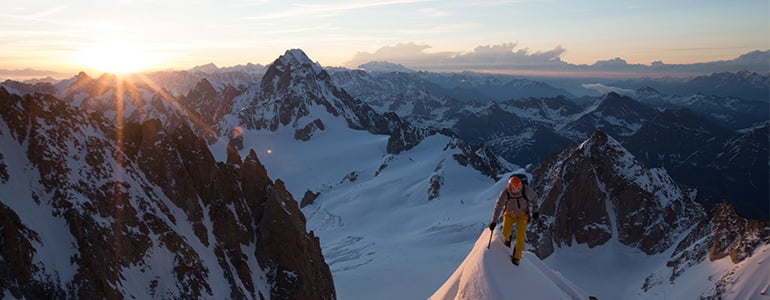
Ueli Steck to climb Nuptse in Nepal
Suunto ambassador Ueli Steck is soon heading to the Himalaya to climb Nuptse, a 7861 m monster in Nepal only 2 km from Everest. Follow our four-part series about Ueli and climbing partner Colin Haley’s journey as they acclimatize and make their one time push to the top.
After climbing 117, 000 vertical meters in the Alps this summer for his #82Summits project, Swiss alpinist Ueli Steck is “super motivated” to take on a grande mountain. In one week the Swiss Machine – famous for his lightning fast solo ascents – is travelling to Nepal to begin acclimatizing for an alpine-style attempt on Nuptse, via its formidable south face.
Click here to read more about Ueli Steck© Jon Griffith Ueli is drawn to Nuptse because the south face reminds him of the Grand Jorasses north face, one of the most famous walls in the Alps – a highly technical climb Ueli has done several times. But, while the Grand Jorasses north face towers 1200 m above the valley below, the south-face of Nuptse is 2500 m and 5 km wide. In 2003, Russian climbers Valeri Babanov and climbing partner Yuri Koshelenko made the first successful ascent of Nuptse via its south-face, using fixed ropes. For this they won the prestigious Piolets d'Or award. However, it came hard won – for Valeri the successful ascent followed three consecutive failed attempts in two years. Since Valeri’s ascent in 2003, no one has again summited Nuptse via the south-face. “It’s never been repeated because it’s a really hard route,” Ueli says. “It’s a really technical route. That’s why I want to go there –it’s another step for me in developing technical, high altitude climbing.”
© Jon GriffithUeli believes Nuptse will be more difficult than his famous 2013 solo ascent of Annapurna, one of the most dangerous mountains in the world. That climb won Ueli the Piolets d'Or award in 2014.“I think it’s definitely harder than Annapurna south face, technical wise,” he says. “The route I did on Annapurna looks insane, but technically it wasn’t hard.”Ueli is also motivated by the fact that no one has done a successful high altitude, technical climb in the Himalaya in the alpine-style.“The true alpine style means you don’t leave fixed ropes, you carry everything on one single ascent,” Ueli explains. “It’s a single push climb – you cannot go up part of the way, come down again and then go back up.”
Whereas Russian climber Valeri Babanov and partner used fixed ropes, Ueli and climbing partner Colin Haley won’t be. “It’s going to be interesting to repeat that route in more of an alpine style,” Ueli says. “Sometimes it’s really cool to realise what other people have climbed. “The fact that someone did it before, means I have much more knowledge, which means I can climb harder because of that knowledge. “I know Valeri very well and for me it’s an honour to repeat one of his routes.”Ueli and Colin will spend about two weeks acclimatizing to the higher altitude on the north face of 6440 m Cholatse. Ueli expects the ascent and descent of Nuptse to take between four and five days.
Stay tuned for the second instalment in our four part series. Part 2: acclimatizing.
Main image credit: © Jon Griffith
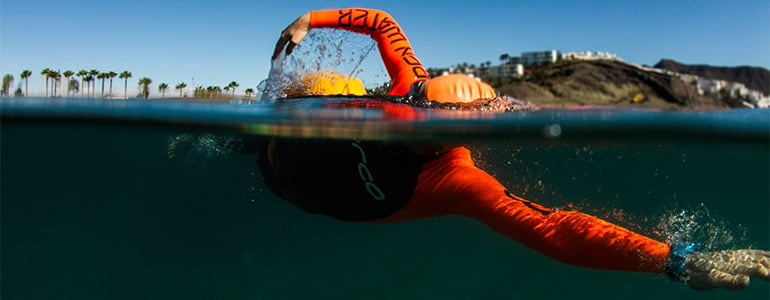
The road to Kona Ironman, Step One: Planning for Success
What does it take to train for the Ironman World Championship in Kona, Hawaii? Follow our four-part series about Suunto athlete Åsa Lundström as she prepares and find out!
For Swedish triathlete Åsa Lundström the next few weeks are everything.
Over the last month, the 30-year-old medical student and professional athlete has been preparing for the approaching Ironman World Championship in Kona, Hawaii on October 10th, 2015.
It’s the legendary Ironman that every triathlete dreams of competing in. That dream is about to become a reality for Åsa.
“Every sport has tales to tell of battles on the race course,” she says. “And with Ironman, we all hear stories of the legendary clashes of the triathlon titans at Kona.
“The best part is that we now have the opportunity to become one of those stories.”
Click here to read more about Åsa, the unlikely Swedish triathlete
Like all big projects, Åsa's road to Kona begins with the most important step: careful planning. She works closely with her professional triathlete coach, Cliff English, for this. When to intensify, where to train and when to go to Hawaii have all been planned well in advance.
Cliff updates Åsa’s training schedule week-by-week, always trying to find the right balance between the intensity and volume of her training and ensuring she gets enough recovery time.
“I’m constantly monitoring her sessions, looking at objective measurements, such as pace and power, as well as her subjective feedback on each session and on other factors including sleep quality, muscle soreness and freshness,” Cliff says.
During a normal training week, Åsa puts in between 20 and 25 hours. For Kona, that jumps to 35 hours every week. Her life becomes structured around training. In one week, she swims five or six times, cycles four or five times, runs five to six times and does strength and core training three times.
“Åsa typically trains two to three times per day,” Cliff says. “Some of the sessions are separate with a morning session then a midday session and typically a lighter active recovery session later in the day.
“I tend to prescribe one key session per day, however I also include combo sessions that include bike and run that are typically executed at race efforts.”
All this training might sound austere, like Åsa has no life, but she enjoys the process.
“When I have a big goal to work towards, it feels natural to focus on that, and to make choices adjusted to it,” Åsa says. “I don’t believe being disciplined means life cannot be fun at the same time.”
To keep things fun and to plan in a short term training goal, Åsa recently competed in the Tjörn Triathlon in Sweden and won the women’s division.
“It was a great boost,” she says, “and gave me proof that my training is going in the right direction.”
That’s important because she says it’s not always easy to tell if her build up is going well.
“When you are in a big training period, you feel tired and worn, and it’s hard to tell sometimes,” she explains. “However, when you feel tired, and you somehow manage to make the body do what you ask, then this is a good sign, especially if you were able to push yourself to a required pace or effort you didn’t think you could do.”
Åsa recently travelled to Fuerteventura in the Canary Islands to begin her final preparations. The warmer conditions are more similar to Hawaii than in Sweden, making it a good training ground.
Check out the second step, progress, of our four part series about Åsa as she continues on the road to the Ironman World Championship in Kona.
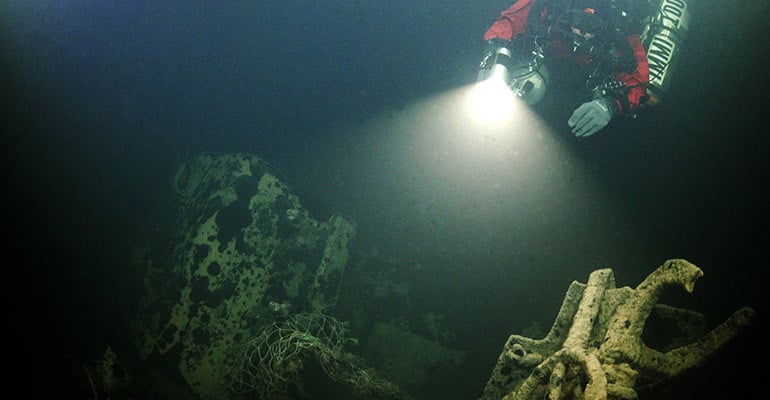
FINDING THE LAST MISSING GERMAN WW2 U-BOAT IN THE GULF OF FINLAND
“For those who love adventure and exploration, the fraction of a second when you realise that you have actually rewritten the history or confirmed something that has only been speculated on before, is an unforgettable moment,” says underwater explorer Immi Wallin.
Immi Wallin and her Subzone team discovered a missing German U-boat off the Estonian coast in August. Here, Wallin tells the story for the first time.
“The secrets of the seas, with its hidden lost ships, do not reveal themselves easily. To find these secrets, you sometimes need perfect weather, plotting information from the archives of sea charts and then checking a mysterious marking on your chart, which you do not remember how and why you put down in the first place.
On August 12th, about a month ago, I went to check a marking on my sea chart with side scan sonar together along with my colleague. The marking had bothered me for some time because I did not remember what it was and it seemed to be next to a mine row and in a patrol area of a still missing German U-boat.
U679’s closed hatch and periscope
U-679 gave a weather report on December 27th 1944 while in the Gulf of Finland. She had rendezvoused at sea with U-637 and U-745 in the evening of December 26th. U-745 had delivered encrypted communication.
On January 9th, Soviet MO-124 detected a submarine four miles northeast of the Pakri lighthouse and dropped eight large and 20 small depth charges. The Germans assumed that MO-124 had sunk U-679, but the Soviets did not believe it because they didn't find any evidence of a destroyed submarine in the area. Nevertheless, the cause for disappearance of U-679 that was recorded in Western literature was depth charge attack by MO-124. The fact that U-679 did not reply to a message sent on January 10th, 1945 supported this theory.
Depth, poor visibility, hydrogen sulphide, hypoxia and trawl nets made the dive a challenge
Back to August 12th 2015. I decided to survey the whole mine row laid in January 1945 that was plotted next to the marking I had on my sea chart. When reaching the marked spot on the chart, something happened on the screen of the side scan sonar. The moment I saw a submarine image appearing on the sonar screen was exactly the fraction of a second that I will remember forever. The image showed a Type 7C German submarine – already recognizable from the image. There was only one that had not been found yet – U-679. That same night the Estonian National Heritage Board was informed about the discovery.
The first dive to U-679 was conducted on September 10th. Due to the depth, 90 m, we needed a flat sea and a team of deep divers, support divers and boat handlers. The aim for the dive was to document the wreck’s condition. The video material was provided to the authorities.
Conditions were good at the surface, but more challenging in the water. There were slight horizontal currents all the way from the surface to the bottom. The most challenging part was the visibility that worsened towards the depths.
We passed several white cloud layers and just about 10 m above the bottom the visibility got very bad and I could smell the hydrogen sulphide typical for a sea bottom with hypoxia. The shape of the submarine’s conning tower became slightly visible in the light we carried with us. The shot line was in the middle of the conning tower, so we decided to shoot video around the conning tower having possibility to find back to the shot line.
U679’s 37mm antiaircraft gun
The video camera, once again, could see much more than our eyes. We could confirm what was visible already on the side scan sonar image. The conning tower was type IV, having 3.7 cm anti-aircraft gun on the lower wintergarten and two 2 cm zwilling anti-aircraft guns on the upper wintergarten. The hatches were closed.
U-679 was lost with all hands, so the wreck is also a war grave for 51 men who lost their lives serving their country. The wreck will be respected as these men’s final resting place and as a historical monument of the war event. U-679 is now under state protection set by Estonian Heritage Board.”
Freedom – The beauty of our underwater world
Experience the beauty of our fragile underwater world with Tomoka Fukuda, Fernando Stalla and others.
Freedom – The beauty of our underwater world














































































